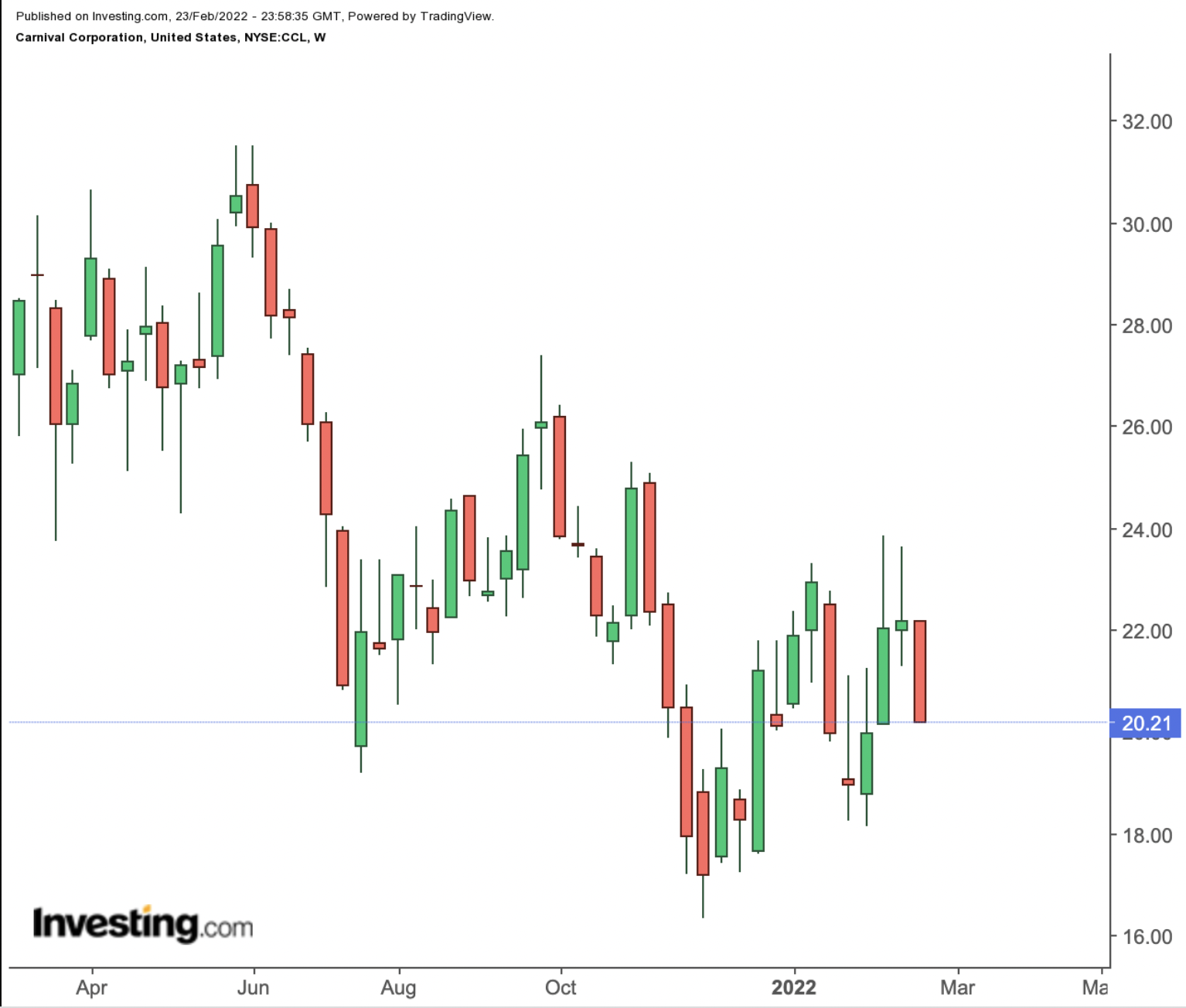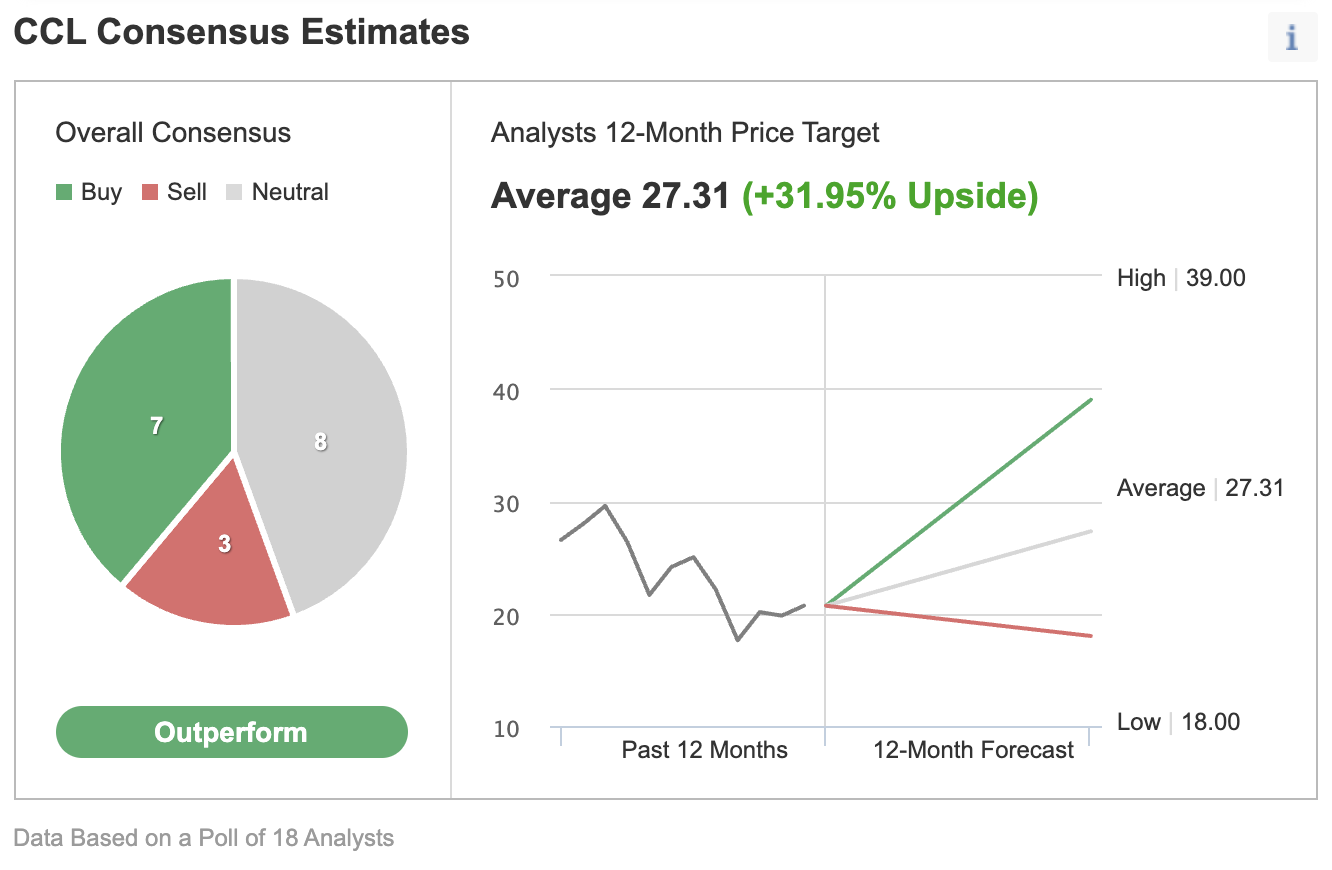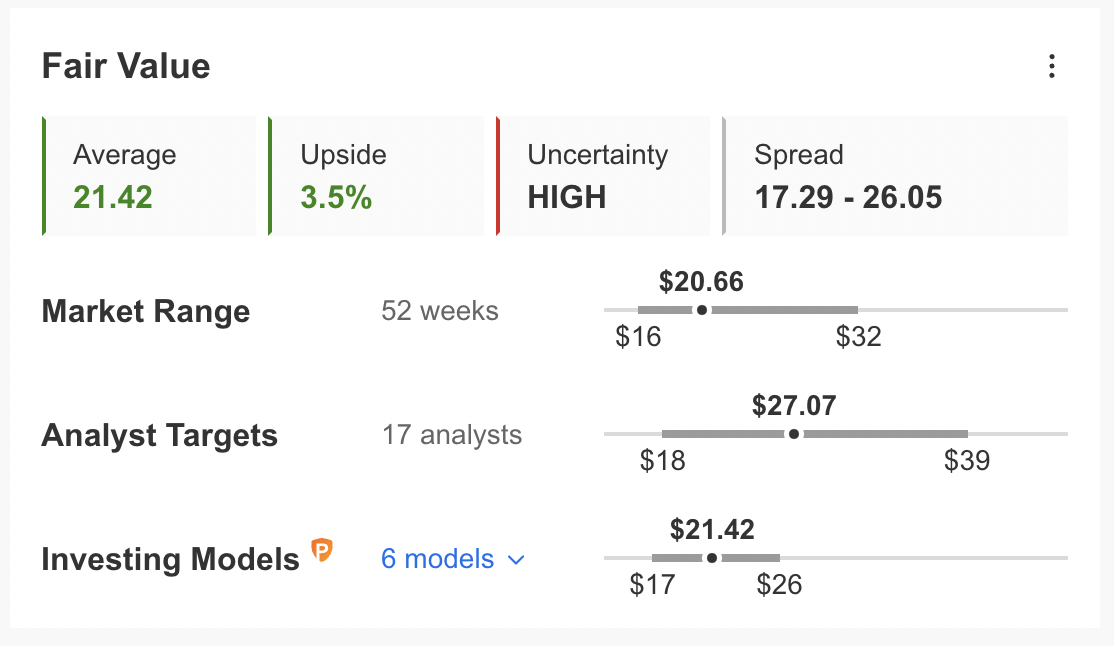ION expands ETF trading capabilities with Tradeweb integration
- Shares of Carnival are up 3.1% since the beginning of this year
- As Omicron fears fade, cruise line industry will show signs of recovery
- Long-term investors could consider buying dips in CCL, especially toward $20
Investors in the largest cruise company in the world, Carnival Corporation (NYSE:CCL), have been spared the rout we’ve seen across Wall Street's major indices. So far this year, CCL is up 3.1%. However, shares have lost 23.2% over the past 12 months.

By comparison, the Dow Jones Travel & Tourism Index is down 5.1% in 2022. Meanwhile, Carnival’s two main competitors—Norwegian Cruise Line Holdings (NYSE:NCLH) and Royal Caribbean Cruises (NYSE:RCL)—have had mixed returns. NCLH shares are down 4.5%, while RCL stock is up 5.3% since the start of January.
With a market capitalization of $23.5 billion, Carnival is the largest cruise operator in the world. Among its brands are Carnival Cruise Line, Holland America Line, Princess Cruises, P&O Cruises, Costa Cruises, and Cunard. The group also operates Holland America Princess Alaska Tours in Alaska and the Canadian Yukon.
The travel group’s shares are listed on both sides of Atlantic—in the UK and US. Until last June, Carnival was the only company to be part of both the S&P 500 index and the FTSE 100. But following the slump in the stock's price in the early months of COVID-19, CCL stock was demoted from the coveted FTSE 100 to the smaller FTSE 250 index. Around that time, Carnival also axed its dividends.
In 2019, the size of the US cruise industry was around $13 billion. It is the country with the largest cruise industry revenue. Meanwhile, in 2019, the global industry revenue was around $27.5 billion. Analysts expect that number to exceed $34 billion in 2025. And Carnival’s market share is about 45%.
The company’s fiscal year ended Nov. 30, and management issued Q4 and year-end metrics on Dec. 20. Carnival resumed cruise operations in Sept. 2021. As of Nov. 30, it was operating at 61% capacity.
Revenue of $1.29 billion lagged behind the Street’s estimates. The monthly average cash burn rate for the quarter was $510 million. Adjusted net loss was $2 billion for the quarter.
On the results, CEO Arnold Donald said:
“Our cash from operations turned positive in the month of November… We enter the year with $9.4 billion of liquidity.”
Cumulative advanced bookings for the second half of 2022 and the first half of 2023 are at the higher end of historical ranges and at higher prices, according to the company's announcement. The company expects a net loss for the first half of 2022 and a profit for the second half of 2022 on both US GAAP and adjusted basis for both periods.
Prior to the release of the quarterly results, CCL stock was around $18. Now, it is trading at around $20.20.
What To Expect From Carnival Shares
Among 18 analysts polled via Investing.com, CCL stock has an “outperform" rating.
Analysts also have a 12-month median price target of $21.51 for the stock, implying an increase of about 31% from current levels. The 12-month price range currently stands between $18 and $39.

Source: Investing.com
On the other hand, according to a number of valuation models, like those that might consider P/E or P/S multiples or terminal values, the average fair value for Carnival stock via InvestingPro is $21.42.

Source: InvestingPro
In other words, fundamental valuations suggest shares could increase about 3.0%.
However, we should remind readers that Carnival, as well as other cruise lines, still have little revenue compared with 2019—a fact that affects these current metrics. Therefore, we could easily see better fundamentals once these cruise operators set sail. Therefore, potential investors would need to keep a close eye on how the industry, as well as Carnival, move forward in the coming quarters.
In the coming days, we expect CCL stock to trade in a range, possibly between $20.00 and $22.50, and build a base. Unless there are other COVID-19 variants or geopolitical issues that continue to affect the industry adversely, shares could potentially start a new leg up in the later part of 2022.
Adding CCL Stock To Portfolios
Carnival bulls who are not concerned about short-term volatility could consider buying into the declines. The target price would be $21.51, according to analysts’ forecasts.
Alternatively, investors could consider buying an exchange-traded fund (ETF) that has CCL stock as a holding. Examples include:
- Defiance Hotel, Airline, and Cruise ETF (NYSE:CRUZ)
- SonicShares™ Airlines, Hotels, Cruise Lines ETF (NYSE:TRYP)
- Invesco S&P 500® Equal Weight Consumer Discretionary ETF (NYSE:RCD)
- AdvisorShares Hotel ETF (NYSE:BEDZ)
- SoFi Social 50 ETF (NYSE:SFYF)
Finally, investors who believe the decline in CCL stock will come to an end soon might consider selling a cash-secured put option. As it involves options, this setup is not appropriate for all investors.
Cash-Secured Put Selling With Carnival
Intraday CCL Price: $21.10
Such a bullish trade could especially appeal to those who want to receive premiums (from put selling) or to possibly own CCL shares for less than their current market price at $21.10.
This strategy may be appropriate when investors are slightly bullish or neutral on Carnival stock at this time. Selling cash-secured put options on CCL would generate income as the seller receives a premium.
For instance, if investors sold the $20 strike put that expires on Apr. 14, they could collect about $1.45 in premium. Therefore, the maximum return for the seller on the day of expiry would be $145, excluding trading commissions and costs, if the option expires worthless.
But if the put option is in the money (meaning CCL stock is lower than the strike price of $20) any time before or at expiration on Apr. 14, this put option can be assigned.
The put seller would then be obligated to buy 100 shares of Carnival stock at the put option strike price of $20 for a total of $2,000 per contract.
If the put seller gets assigned CCL shares, the maximum risk is similar to that of stock ownership. In other words, the stock could theoretically fall to zero. But this risk is partially offset by the premium received ($145 for 100 shares).
The break-even point for our example is the strike price ($20) less the option premium received ($1.45), i.e., $18.55. This is the price at which the seller would start to incur a loss.
Cash-secured put selling is a moderately more conservative strategy than buying shares of a company outright at the current market price. This can be a way to capitalize on any choppiness in Carnival stock in the coming weeks, especially given the uncertainty around how COVID-19 and geopolitical issues develop.
Investors who end up owning CCL shares as a result of selling puts could further consider setting up covered calls to increase the potential returns on their shares. Thus, selling cash-secured puts could be regarded as the first step in stock ownership.
Bottom Line
Shares of Carnival have come under significant pressure in the last two years. However, Wall Street is expecting better days ahead as the cruise industry sets sail again. Therefore, interested investors with a two- to three-year time horizon could consider buying the dip in CCL shares or put together an options strategy.
